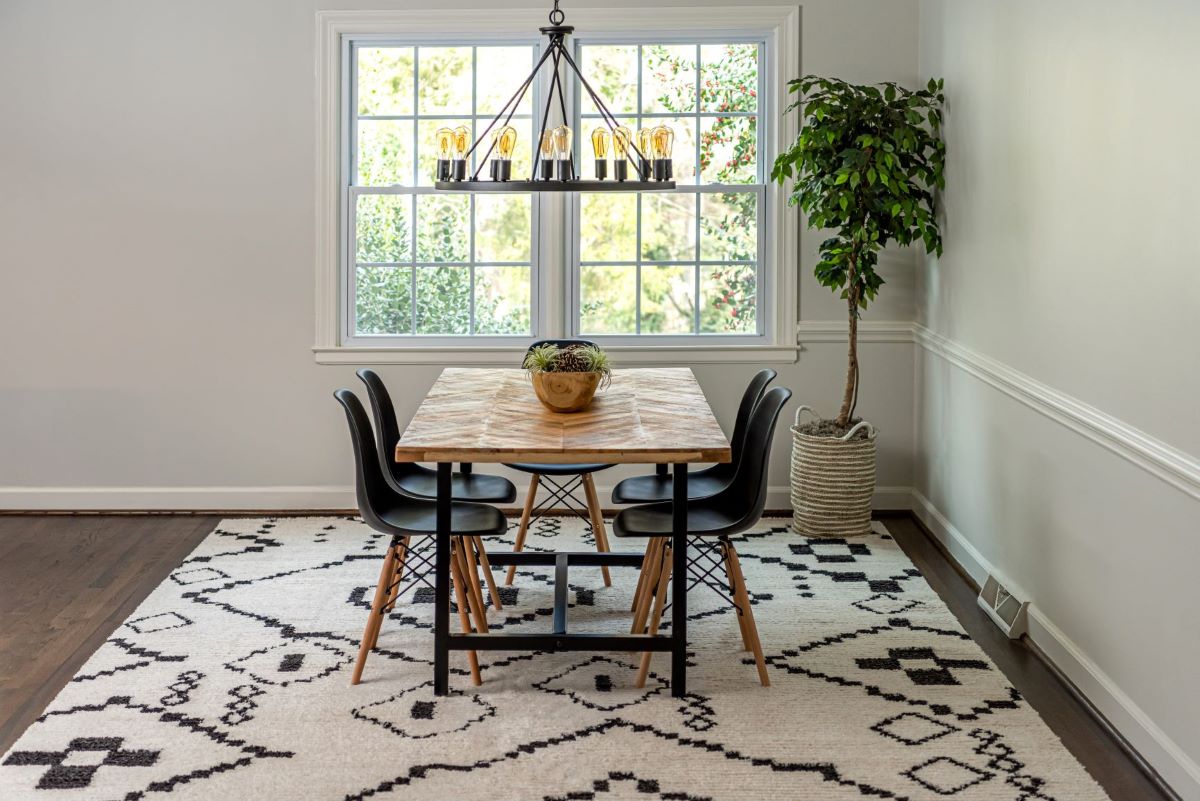

Articles
How To Choose A Dining Room Rug
Modified: January 18, 2024
Looking for articles on how to choose a dining room rug? Discover expert tips and advice to help you find the perfect rug for your dining space.
(Many of the links in this article redirect to a specific reviewed product. Your purchase of these products through affiliate links helps to generate commission for Storables.com, at no extra cost. Learn more)
Introduction
Choosing the right dining room rug is no small task. It is not merely a decorative accent, but a functional piece that can tie the entire room together. A well-chosen rug can add warmth, texture, and visual interest to the space, while also protecting your floors and defining the dining area. However, with so many options available, it can be overwhelming to know where to start.
In this article, we will guide you through the considerations for choosing a dining room rug, offer tips for selecting the right one, and help you make a decision that suits your style, budget, and practical needs.
When selecting a dining room rug, there are several factors to keep in mind. These include size and shape, material and texture, style and design, practicality and maintenance, and budget. By carefully considering each of these aspects, you can ensure that the rug you choose not only enhances the aesthetic appeal of your dining room but also meets your practical requirements.
So, let’s dive in and explore the key considerations for choosing a dining room rug that will transform your space into a stylish and inviting area for meals, gatherings, and memorable moments with family and friends.
Key Takeaways:
- Choosing the perfect dining room rug involves considering size, material, style, practicality, and budget. By carefully evaluating these factors, you can find a rug that enhances your space both aesthetically and functionally.
- When selecting a dining room rug, it’s essential to measure your space, determine the appropriate shape, consider material durability, and set a realistic budget. By doing so, you can make an informed decision that suits your personal style and practical needs.
Read more: How To Choose A Rug For The Dining Room
Considerations for Choosing a Dining Room Rug
When selecting a dining room rug, it is essential to consider several factors to ensure you make the right choice. These factors will help you determine the appropriate size and shape, the ideal material and texture, the suitable style and design, the level of practicality and maintenance required, and how it fits into your budget.
Size and Shape: The size and shape of the rug play a crucial role in creating a visually appealing and functional dining area. The rug should be large enough to accommodate the dining table and chairs, allowing for comfortable movement and pulling back chairs without falling off the rug. As a general rule, the rug should extend at least 24 inches beyond the edges of the table to ensure ample space.
Material and Texture: The choice of material and texture depends on personal preference, style, and practicality. Natural fibers like wool or jute offer durability and a cozy feel underfoot. Synthetic materials like polypropylene are more resistant to stains and easy to clean, making them ideal for high-traffic areas. Consider the texture of the rug as well, as a flat weave or low pile rug is easier to clean than a shaggy or textured rug.
Style and Design: The dining room rug should complement the overall style and decor of the space. Consider the color scheme, patterns, and motifs present in the room and choose a rug that harmonizes with them. A solid-colored rug can ground a room with bold or busy patterns, while a patterned rug can add visual interest to a more neutral space.
Practicality and Maintenance: Think about the practical aspects of owning a dining room rug. Consider factors such as stain resistance, ease of cleaning, and resistance to wear and tear. Rugs with darker colors or patterns can help hide stains and spills, while rugs treated with stain-resistant coatings provide added protection.
Budget: Set a budget for your dining room rug to help narrow down your options. Rugs come in a wide range of prices, so determining your budget beforehand will help you focus on rugs that fit within your price range.
By considering these factors, you can narrow down your choices and find a dining room rug that not only enhances the aesthetic appeal of your space but also meets your practical needs.
Size and Shape
When it comes to choosing the right size and shape for your dining room rug, there are a few key considerations to keep in mind. The size of the rug should accommodate the dining table and chairs comfortably, allowing for easy movement and providing a visually cohesive look.
The general rule of thumb is to select a rug that extends at least 24 inches beyond the edges of the table on all sides. This ensures that when chairs are pulled back, they do not fall off the rug. To determine the correct size, measure the length and width of your dining table and add 48 inches to each dimension. This will give you the minimum size requirement for your rug.
Another option is to choose a rug that covers the entire dining area, including the space for chairs even when they’re pulled out. In this case, measure the entire room and subtract at least 24 inches from each dimension to create a border of floor space.
The shape of the rug should complement the shape of your dining table. For rectangular tables, a rectangular or oval rug works best. This helps to visually anchor the table and creates a cohesive look in the room. For round or square tables, a round rug is the obvious choice. A round rug softens the angular shape of the table and adds visual interest to the space.
However, you can also play with contrasting shapes to create a dynamic look. For example, pairing a rectangular table with a round rug can create a visually appealing contrast that adds a touch of uniqueness to your dining area. Just ensure that the rug is large enough to accommodate the chairs even when they’re pulled out.
Keep the proportions in mind when choosing the size and shape of the rug. A small rug on a large dining table can look out of place and make the space feel unbalanced. Conversely, a large rug in a small dining area can overpower the room and make it feel cramped.
Ultimately, the size and shape of the rug should provide ample space for movement around the table and chairs while visually anchoring the dining area. By considering the dimensions of your dining table and the layout of the room, you can choose a rug that enhances the functionality and aesthetics of your dining room.
Material and Texture
The choice of material and texture for your dining room rug is crucial in terms of both aesthetics and practicality. Different materials offer varying levels of durability, comfort, and maintenance requirements. Understanding the characteristics of each material will help you make an informed decision that suits your needs and preferences.
Wool: Wool is a popular choice for dining room rugs due to its natural beauty, softness, and durability. It is resistant to stains and spills, making it easier to clean and maintain. Wool rugs also have excellent insulating properties, keeping your feet warm during colder months. However, wool rugs may require professional cleaning to remove deep stains and odors.
Synthetic Fibers: Synthetic fibers like nylon, polyester, and polypropylene are known for their stain resistance and durability. They are less expensive than natural fibers and are less likely to fade or show signs of wear. Polypropylene, in particular, is highly resistant to stains and moisture, making it a practical choice for dining areas with high traffic or households with children and pets.
Jute and Sisal: Jute and sisal rugs are made from natural plant fibers and have a distinctive texture. They add warmth and a natural, earthy feel to the space. However, they may not be the best choice for dining areas as they can be more prone to staining and are more difficult to clean.
Flat Weave: Flat weave rugs, such as cotton or kilim rugs, have a low pile and are known for their durability. They are easy to clean and maintain, making them suitable for dining areas. Their flat texture also allows chairs to move freely without getting caught on the rug.
Shaggy Rugs: Shaggy rugs provide a plush, luxurious feel underfoot. They add texture and warmth to the dining area. However, they may not be the most practical choice for dining rooms as they can trap food particles and be more challenging to clean. If you prefer a shaggy rug, consider opting for one with a shorter pile for easier maintenance.
Consider your lifestyle, the frequency of use, and the level of maintenance you are willing to undertake when choosing the material and texture of your dining room rug. By selecting a material that balances aesthetics and practicality, you can ensure that your rug remains beautiful and functional for years to come.
Style and Design
The style and design of your dining room rug play a significant role in enhancing the overall aesthetics of the space. The right rug can add a touch of personality, tie the room together, and create a cohesive look. Here are some considerations to keep in mind when selecting a style and design for your dining room rug.
Color: The color of the rug should harmonize with the existing color scheme in the dining room. Consider the wall color, furniture, and accessories when choosing the rug color. You can opt for a rug that complements the room’s colors, providing a subtle contrast, or choose a rug that adds a pop of bold color to create a focal point in the space.
Pattern: Patterns can add visual interest and depth to the dining room. However, it’s essential to strike a balance between the rug’s pattern and the other patterns present in the room. If you have bold patterns on the walls or upholstery, consider a rug with a more subtle pattern or a solid-color rug to avoid overwhelming the space. On the other hand, if you have a more simplified decor, a patterned rug can add a layer of sophistication.
Size of Patterns: The size of the patterns on the rug should be appropriate for the size of the dining room. In a small dining area, large patterns can make the space feel even smaller. Conversely, in a large dining room, small patterns may get lost. Consider the scale and proportions of the patterns to ensure they complement the room’s size.
Traditional or Contemporary: Decide whether you want a rug that aligns with a traditional or contemporary style. Traditional rugs, such as Oriental or Persian designs, can add elegance and timeless charm to the dining room. Contemporary rugs, on the other hand, often feature bold colors, geometric patterns, or abstract designs, creating a more modern and vibrant atmosphere. Choose a style that resonates with your personal taste and complements the rest of the room’s decor.
Texture: The texture of the rug can add depth and visual interest to the dining room. Consider the texture of the rug in relation to the other textures present in the space. For example, if you have smooth, sleek furniture, a rug with a textured surface can create a nice contrast. If your dining area already has various textures, opt for a rug with a simpler texture to avoid overwhelming the space.
Ultimately, the style and design of the dining room rug should reflect your personal style and enhance the overall ambiance of the dining area. By considering the color, pattern, size of patterns, traditional or contemporary style, and texture, you can choose a rug that ties the room together and creates a visually stunning space for your meals and gatherings.
Read more: How To Choose A Rug For Dining Room
Practicality and Maintenance
When choosing a dining room rug, it is important to consider practicality and maintenance requirements. Dining areas are prone to spills, stains, and high foot traffic, so selecting a rug that can withstand these challenges will ensure its longevity and ease of upkeep.
Stain Resistance: Look for rugs that are marketed as stain-resistant or have been treated with a protective coating. These rugs are designed to repel stains and spills, making them easier to clean and maintain. Stain-resistant rugs are especially beneficial in dining rooms, where accidental spills are likely to occur.
Ease of Cleaning: Consider the cleaning process required for the rug. Rugs with shorter pile or flat weave constructions are generally easier to clean as they trap less dirt and debris. You can easily vacuum or spot clean these rugs to keep them looking fresh. On the other hand, shaggy or high-pile rugs may require more effort to clean, as dirt and debris can get trapped within the fibers.
Resilience and Durability: Dining rooms experience high foot traffic, especially when chairs are constantly being pulled in and out. Choose a rug that is durable and resilient enough to withstand this daily wear and tear. Natural fibers like wool and sisal are known for their durability, while synthetic fibers like nylon and polypropylene are resistant to crushing and fading.
Color and Pattern: Consider the practicality of the rug’s color and pattern. Rugs with darker colors or patterns can help hide stains and spills, making them a practical choice for dining areas. If you prefer lighter-colored rugs, opt for ones with stain-resistant treatments or removable, washable covers to make maintenance easier.
Non-Slip Backing: To ensure safety and stability, look for rugs with a non-slip backing. This prevents the rug from sliding or shifting when chairs are pulled in and out. Non-slip rug pads can also be used to provide additional grip and protection for your floors.
Professional Cleaning: Keep in mind that some rugs may require professional cleaning for deep stains or general maintenance. Wool rugs, for example, may need periodic professional cleaning to maintain their appearance and longevity. Consider the cost and frequency of professional cleaning when choosing a rug.
By considering the practicality and maintenance requirements of the rug, you can select a dining room rug that not only looks beautiful but also withstands the demands of everyday use. A rug that is easy to clean, durable, and resilient will ensure that your dining area remains inviting and well-maintained for years to come.
Budget
Setting a budget is a crucial step in choosing a dining room rug. Rugs come in a wide range of prices, so determining your budget beforehand will help you narrow down your options and make a more targeted selection.
Consider how much you are willing to spend on a rug for your dining room. Keep in mind that the price of a rug can vary based on factors such as size, material, construction, and brand. While it’s tempting to splurge on a luxurious or high-end rug, it’s essential to find a balance between quality and affordability.
When determining your budget, consider the size of your dining room and the dimensions needed for the rug to properly fit the space. Larger rugs tend to be more expensive, so be prepared for potential price differences based on the size you require.
Also, take into account the material and construction of the rug. Natural fiber rugs like wool or jute tend to be more expensive than synthetic fiber rugs. Additionally, hand-knotted or hand-woven rugs may have a higher price point compared to machine-made rugs.
It’s worth exploring various retailers and options to find the best value for your budget. Look for sales, discounts, or promotions that may be available. Online retailers often offer a wider selection and competitive pricing compared to brick-and-mortar stores.
Remember, the cost of the rug is not the only factor to consider. Think about the long-term investment of the rug as well. A higher-quality rug may last longer and require less frequent replacement, ultimately saving you money in the long run.
Lastly, be open to considering alternative options such as vintage or gently-used rugs. These may provide unique styles and designs at more affordable prices. Don’t forget to factor in any additional costs, such as rug padding or cleaning supplies, when determining your budget.
By setting a budget and exploring different options within that range, you can find a dining room rug that meets your style preferences and practical needs without breaking the bank. Remember, the goal is to find a rug that strikes the right balance between quality, affordability, and overall value for your dining room.
Tips for Selecting the Right Dining Room Rug
Choosing the perfect dining room rug can be an exciting but challenging task. To help you make an informed decision, here are some helpful tips to consider:
Measure your Dining Room: Before you start shopping, measure your dining room to determine the appropriate size for your rug. Consider both the size of your dining table and the space needed for chairs, both tucked in and pulled out. This will ensure that your rug is proportionate to the room and accommodates the furniture properly.
Determine the Rug Shape: Choose a rug shape that complements the shape of your dining table. Rectangular or oval rugs work well with rectangular tables, while round rugs are ideal for circular or square tables. If you’re feeling adventurous, you can also mix shapes to create an interesting contrast.
Choose the Appropriate Material: Consider the durability and maintenance requirements of different rug materials. Natural fibers like wool and jute are known for their durability, while synthetic fibers like nylon and polypropylene offer stain resistance and easy cleaning. Select a material that suits your lifestyle and budget.
Decide on a Style: Determine the style and design aesthetic you want to achieve in your dining room. Consider the color scheme, patterns, and overall decor of the space. Whether you prefer a traditional, contemporary, or eclectic style, choose a rug that complements the existing elements and enhances the overall ambiance.
Consider Maintenance and Durability: Think about the practical aspects of owning a dining room rug. Consider factors such as stain resistance, ease of cleaning, and the rug’s ability to withstand wear and tear. Opt for a rug that is suitable for high-traffic areas and offers easy maintenance to save time and effort in the long run.
Set a Budget: Determine your budget for a dining room rug and explore options within that range. Consider the size, material, and construction quality that align with your budget. Remember that investing in a quality rug will provide long-term value and durability.
By incorporating these tips into your search for the perfect dining room rug, you can ensure that you make a well-informed decision that enhances your dining space and brings both style and functionality to your home.
When choosing a dining room rug, make sure it is large enough to fit under the table and chairs, with at least 24 inches of extra space on all sides to allow for easy movement.
Measure your Dining Room
Measuring your dining room is a crucial first step when it comes to selecting the right rug for your space. Taking accurate measurements will help you determine the appropriate size and ensure that the rug fits proportionally within the room. Here are some tips for measuring your dining room:
Determine the Rug Placement: Decide where you want to place the rug in your dining room. Typically, you’ll want the rug to extend beyond the edges of the dining table so that chairs can comfortably fit on the rug even when pulled out. This helps create a cohesive and visually appealing look.
Measure the Dining Table: Start by measuring the length and width of your dining table. Use a tape measure to get accurate dimensions. Write down these measurements as they will be crucial when determining the appropriate size of the rug.
Add Extra Inches: To ensure that chairs can be pulled out without falling off the rug, it’s recommended to add at least 24 inches to each side of the table. This allows for ample space for chairs to be comfortably positioned on the rug. If you have a larger dining room, you can add even more inches to create a more generous border of floor space around the rug.
Consider the Room Layout: Take into account the layout of your dining room and any other furniture or architectural features. This will help you determine the maximum size of the rug that can fit comfortably within the room without obstructing other elements.
Leave Space for Walkways: Ensure that you leave enough space for walkways around the dining table. Ideally, you want to have at least 36 inches of clearance between the edges of the rug and the walls or other furniture. This allows for easy movement within the room without feeling cramped.
Consider Shape: If you have a rectangular dining table, a rectangular or oval rug is the most suitable choice. For round or square tables, a round or square rug will complement the shape. However, don’t be afraid to mix shapes to create visual interest and contrast in your dining room.
Once you have accurately measured your dining room and determined the placement of the rug, you can confidently choose a rug size that fits proportionally within the space. By taking these measurements into consideration, you will ensure that the rug not only enhances the aesthetics of the room but also provides functionality and comfort for your dining area.
Read more: How To Choose A Dining Room Rug
Determine the Rug Shape
When choosing a rug for your dining room, it is important to consider the shape of the rug that best complements your dining table. The shape of the rug can significantly impact the overall aesthetic and functionality of the space. Here are some tips to help you determine the rug shape for your dining room:
Rectangular Tables: If you have a rectangular dining table, a rectangular or oval rug is typically the most suitable choice. This shape aligns well with the straight lines and angles of the table, creating a cohesive and balanced look in the room. A rectangular rug that is proportionate to the table will help define the dining area and visually anchor the furniture.
Round Tables: For round dining tables, a round rug is the obvious choice. The circular shape of the rug enhances the curves of the table, creating a harmonious and visually appealing effect. A round rug can soften the overall look of the dining area and add a touch of elegance.
Square Tables: In the case of square dining tables, both square and round rugs can work well. A square rug can align perfectly with the lines of the table, emphasizing its shape and providing a clean and uniform appearance. On the other hand, a round rug can create a contrasting effect and add a dynamic element to the space.
Mixing Shapes: Don’t be afraid to mix shapes to create visual interest and contrast in your dining room. For example, if you have a rectangular table, you can experiment with placing a round rug underneath it. This creates a striking contrast between the angular lines of the table and the soft curves of the rug. Mixing shapes can add a unique and creative touch to your dining area.
When determining the rug shape, consider the size of your dining table and the dimensions of your dining room. The goal is to select a shape that complements the table and fits comfortably within the available space. Remember to measure your dining room and consider the layout to ensure that the rug size and shape harmonize with the overall design of the room.
Choosing the right rug shape will not only enhance the visual appeal of your dining room but also create a cohesive and inviting atmosphere for meals and gatherings. So, take the time to determine the rug shape that best suits your dining table and allows you to make a statement with your decor.
Choose the Appropriate Material
When selecting a dining room rug, choosing the right material is key to ensure both durability and comfort. Different materials offer varying levels of resilience, maintenance requirements, and texture. Here are some popular rug materials to consider:
Wool: Wool is a classic and widely acclaimed choice for rugs. It is natural, durable, and provides a soft and luxurious feel underfoot. Wool rugs are known for their excellent stain resistance and durability, making them suitable for high-traffic areas like dining rooms. Additionally, wool has natural flame resistance and insulation properties, keeping your dining area comfortable throughout the year.
Synthetic Fibers: Synthetic materials like nylon, polyester, and polypropylene offer a range of benefits. They are often more affordable than natural fibers and are highly resistant to stains, fading, and wear. Polypropylene, in particular, is known for its exceptional durability and resistance to moisture, making it an excellent choice for dining rooms prone to spills or households with children and pets.
Natural Fibers: Natural fiber rugs, such as jute and sisal, provide a distinct texture and bring an earthy, organic vibe to your dining room. These rugs are derived from plant fibers and are known for their durability. However, they may require more care and maintenance compared to synthetic or wool rugs. Natural fiber rugs may be susceptible to staining, so it’s important to promptly clean up any spills and avoid placing them in high-moisture areas.
Cotton: Cotton rugs are soft, lightweight, and offer a casual, laid-back vibe to the dining space. They are easy to clean, making them a practical choice for dining rooms with frequent spills. However, cotton rugs may not have the same level of durability as wool or synthetic rugs and may require more frequent replacement in high-traffic areas.
Silk: Silk rugs are known for their luxurious and lustrous appearance. They add elegance and sophistication to any dining room. However, silk rugs are delicate and require extra care and maintenance. They are best suited for low-traffic areas or formal dining rooms where spills and heavy foot traffic are less likely to occur.
Consider your lifestyle, budget, and the level of maintenance you are willing to undertake when choosing the material for your dining room rug. Each material has its own unique characteristics, so it’s important to select one that aligns with your specific needs and preferences.
Remember to also consider the texture of the material in relation to the overall design of your dining room. For example, if you have upholstered chairs and smooth surfaces, you may opt for a rug with a textured material to add visual interest and contrast to the room.
By understanding the properties and characteristics of different rug materials, you can make an informed decision that combines style, functionality, and longevity for your dining room rug.
Decide on a Style
Choosing the right style for your dining room rug is essential in creating a cohesive and visually appealing space. The rug’s style should complement the overall decor of the room and reflect your personal taste. Here are some tips to help you decide on the style of your dining room rug:
Consider the Room’s Theme: Take into account the existing theme or style of your dining room. Is it traditional, modern, rustic, or eclectic? Choosing a rug that aligns with the room’s theme will create a harmonious and unified look. For example, a traditional room may benefit from a Persian or Oriental rug, while a modern space may call for a geometric or abstract rug.
Color Scheme: Consider the color scheme of your dining room when selecting a rug style. You have the option of choosing a rug that blends in with the existing color palette to create a cohesive, calming effect. Alternatively, you can choose a rug that provides a contrasting pop of color to make a bold statement. Harmonize the colors with the room’s furniture, walls, and accessories to achieve a balanced and pleasing overall look.
Pattern and Design: The pattern and design of the rug can add visual interest and personality to your dining room. Depending on your preference and the room’s aesthetic, you can choose from a variety of patterns, such as floral, geometric, stripes, or intricate motifs. Consider the size of the room and the furniture placement when selecting a rug pattern, ensuring that it doesn’t overpower the space or clash with other patterns present in the room.
Texture: The texture of the rug can impact the overall feel and mood of your dining room. If your dining room has a sleek, contemporary design, you may opt for a rug with a smooth texture to create a sense of refinement. On the other hand, if you want to add warmth and coziness to the space, a rug with a deeper pile or a textured surface can create a more inviting atmosphere.
Blend or Contrast: Decide whether you want the rug to blend in with the rest of the room’s decor or stand out as a focal point. Blending the rug with the surrounding elements creates a sense of harmony and balance. Contrasting the rug can make it a statement piece, adding drama and visual intrigue to the dining room. Consider your personal style preference and the overall vibe you want to achieve in the space.
Ultimately, the style of your dining room rug should reflect your personality and create a welcoming atmosphere for meals and gatherings. Take your time to visualize how different styles would look in your dining room, and consider the individual elements such as color, pattern, texture, and overall design. By selecting a rug that complements the room’s theme and harmonizes with the existing decor, you can create a truly remarkable dining room that is both stylish and inviting.
Consider Maintenance and Durability
When choosing a dining room rug, it is important to consider the level of maintenance and durability required to keep the rug in good condition. Dining rooms are high-traffic areas prone to spills, stains, and wear, so selecting a rug that can withstand these challenges will ensure its longevity. Here are some factors to consider:
Stain Resistance: Opt for a rug that is stain-resistant or treated with a protective coating. Stain-resistant rugs are specifically designed to repel spills and stains, making them easier to clean and maintain. This feature is particularly important in dining rooms where accidental spills are common occurrences.
Cleaning Method: Consider the cleaning method required for the rug. Some rugs can be easily vacuumed or spot cleaned, while others may require professional cleaning. Take into account your lifestyle and time availability for cleaning. If you prefer a low-maintenance option, choose a rug that can be easily cleaned at home without the need for frequent professional assistance.
Durability: Dining rooms experience high foot traffic, especially when chairs are constantly pulled in and out. Choose a rug that is durable and resilient enough to withstand this regular wear and tear. Natural fibers like wool and sisal are known for their durability, while synthetic fibers like nylon and polypropylene are resistant to crushing and fading.
Color and Pattern: Consider the practicality of the rug’s color and pattern. Rugs with darker colors or intricate patterns can help conceal stains and spills, making them a practical choice for dining rooms. Light-colored rugs may require more frequent cleaning and may not be as forgiving when it comes to visible stains. Patterns with a mix of colors can also help hide small spills and mishaps.
Easy Maintenance Materials: Some rug materials are inherently easier to maintain than others. Synthetic fibers like nylon and polypropylene offer stain resistance and can usually be cleaned with mild soap and water. Flatweave rugs, such as cotton or jute, have a low pile and are easier to vacuum and clean compared to high-pile rugs.
Consider Pets and Children: If you have pets or children in your household, it is important to choose a rug that can withstand their presence. Opt for a rug with stain resistance and durability that can handle the occasional spill or accident. Additionally, consider materials that are less prone to trapping pet hair, making it easier to keep the rug clean and tidy.
By considering the maintenance and durability factors of a dining room rug, you can select one that can withstand the demands of everyday use and continue to enhance the aesthetics of the space for years to come. A rug that is easy to clean, durable, and resistant to wear and tear will ensure that your dining area remains inviting and well-maintained.
Read more: How To Choose A Living Room Rug
Set a Budget
Setting a budget is a crucial step when it comes to choosing a dining room rug. Determining your budget beforehand helps you narrow down your options and ensures that you stay within your financial means. Here are some tips to guide you in setting a budget:
Consider Your Overall Budget: Evaluate your overall budget for home decor and furnishings. Determine how much you can comfortably allocate towards purchasing a dining room rug. Setting a realistic budget will help you focus on rugs that fall within your price range.
Factor in the Size: Keep in mind that the size of the rug will affect its cost. Larger rugs tend to be more expensive than smaller ones due to the amount of material required. Measure your dining area and consider the dimensions needed to properly fit the space. This will give you a better idea of the potential cost range for rugs of suitable sizes.
Consider the Material: Different rug materials come with different price points. Natural fibers like wool or silk may be more costly compared to synthetic fibers like nylon or polypropylene. Consider the durability, quality, and maintenance requirements of the materials when setting a budget.
Explore Different Price Ranges: Rugs come in a wide range of prices, so take the time to explore options within different price ranges. Don’t limit yourself to high-end options if they are beyond your budget. There are many affordable rugs available that can still provide style and functionality for your dining room.
Quality Over Quantity: It’s important to remember that quality often comes with a higher price tag. Investing in a well-made rug of higher quality can be more cost-effective in the long run, as it is likely to withstand regular wear and tear and maintain its appearance over time.
Consider Sales and Discounts: Keep an eye out for sales, discounts, or promotions that may be available. Retailers often offer seasonal sales or special discounts on rugs, allowing you to find quality options at a more affordable price. Online retailers can also provide a wider selection and competitive pricing compared to brick-and-mortar stores.
Additional Costs: Don’t forget to factor in any additional costs related to your rug purchase, such as rug padding or cleaning supplies. These accessories can contribute to the overall cost but are important for maintaining the rug’s appearance and longevity.
By setting a budget and exploring a range of options within that budget, you can find a dining room rug that meets your style preferences and practical needs without exceeding your financial limitations. Remember, it’s about finding a rug that strikes the right balance between quality, affordability, and overall value for your dining room.
Conclusion
Choosing the right dining room rug is a significant decision that can enhance the overall aesthetics and functionality of your dining area. By considering important factors such as size and shape, material and texture, style and design, practicality and maintenance, and budget, you can make an informed choice that suits your personal taste and practical needs.
Start by measuring your dining room and determining the appropriate size and shape of the rug. Ensure that it accommodates your dining table and chairs comfortably, allowing for easy movement and a visually cohesive look. Consider the materials available and choose one that balances durability, comfort, and maintenance requirements.
When it comes to style, take into account the theme and color scheme of your dining room. Select a rug that complements the existing decor and adds visual interest without overwhelming the space. Think about the practical aspects of owning a rug, such as stain resistance, ease of cleaning, and durability.
Setting a budget is crucial to guide your rug selection process. Determine what you can comfortably afford and explore options within that range. Remember that investing in a well-made, higher-quality rug can provide long-term value and durability.
In conclusion, selecting the right dining room rug involves careful consideration of size, shape, material, style, practicality, and budget. By taking the time to evaluate these factors and weigh your options, you can find a rug that not only enhances the visual appeal of your dining area but also meets your practical needs for years to come. Whether you opt for a luxurious wool rug, a low-maintenance synthetic fiber rug, or a textured natural fiber rug, your chosen dining room rug will be the perfect finishing touch that ties your dining space together.
Frequently Asked Questions about How To Choose A Dining Room Rug
Was this page helpful?
At Storables.com, we guarantee accurate and reliable information. Our content, validated by Expert Board Contributors, is crafted following stringent Editorial Policies. We're committed to providing you with well-researched, expert-backed insights for all your informational needs.
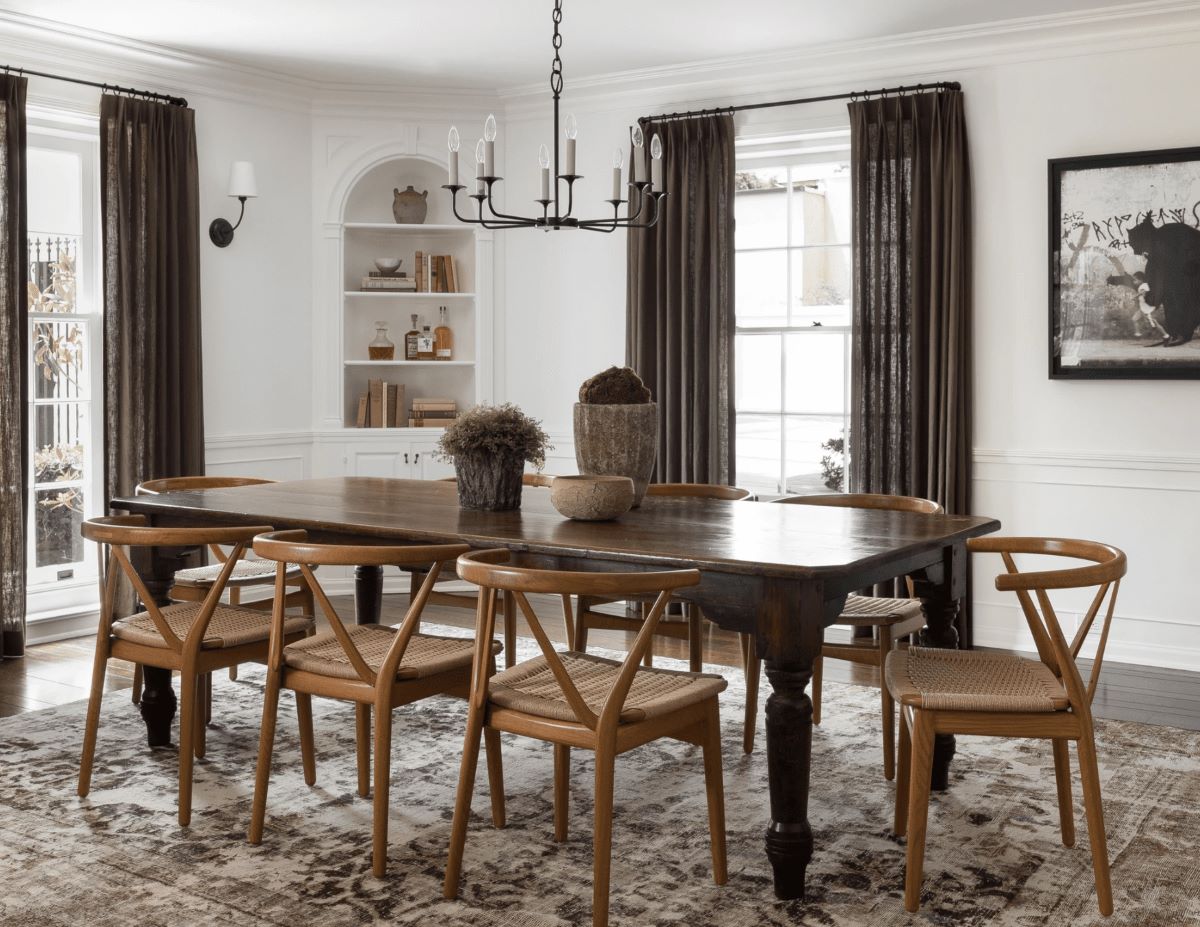
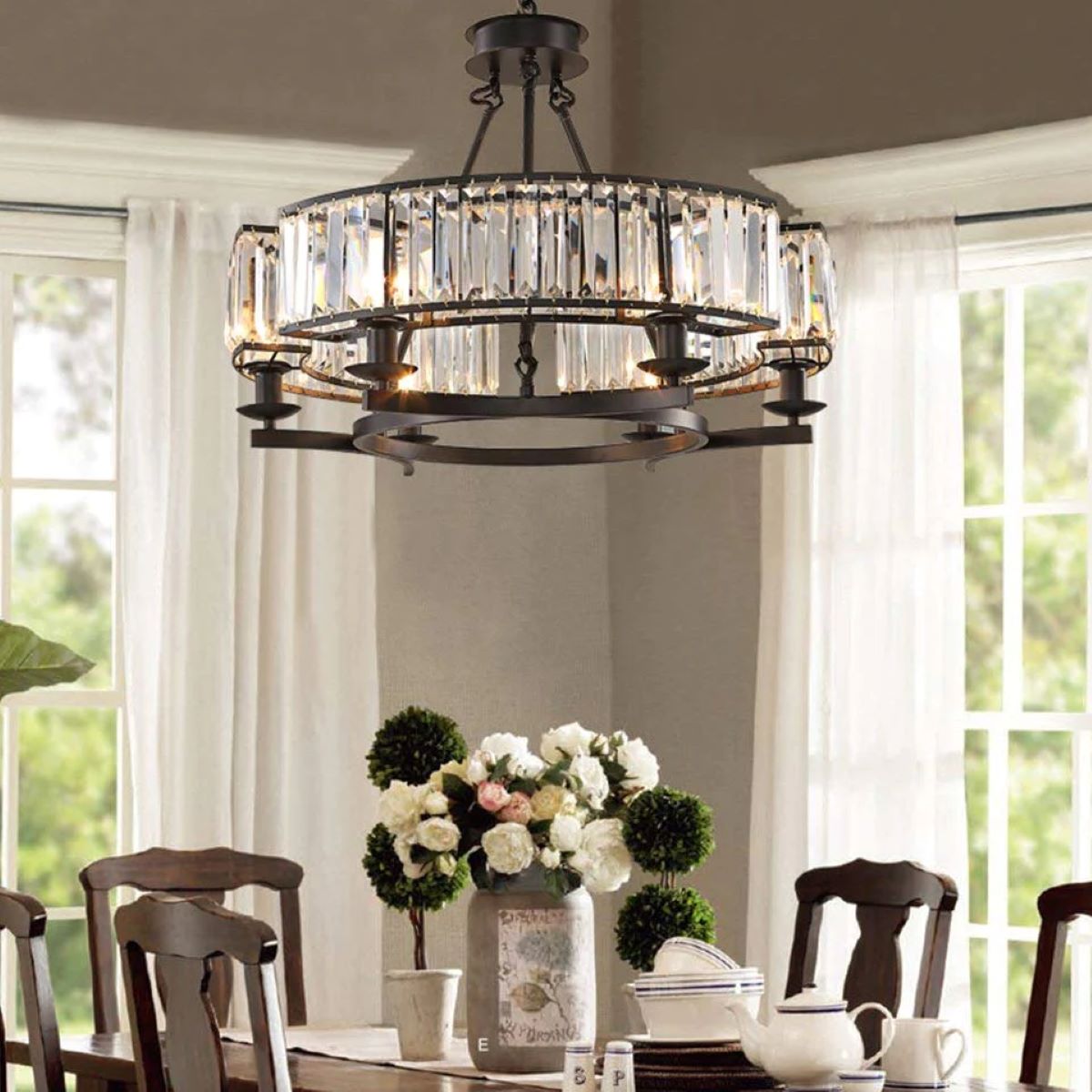
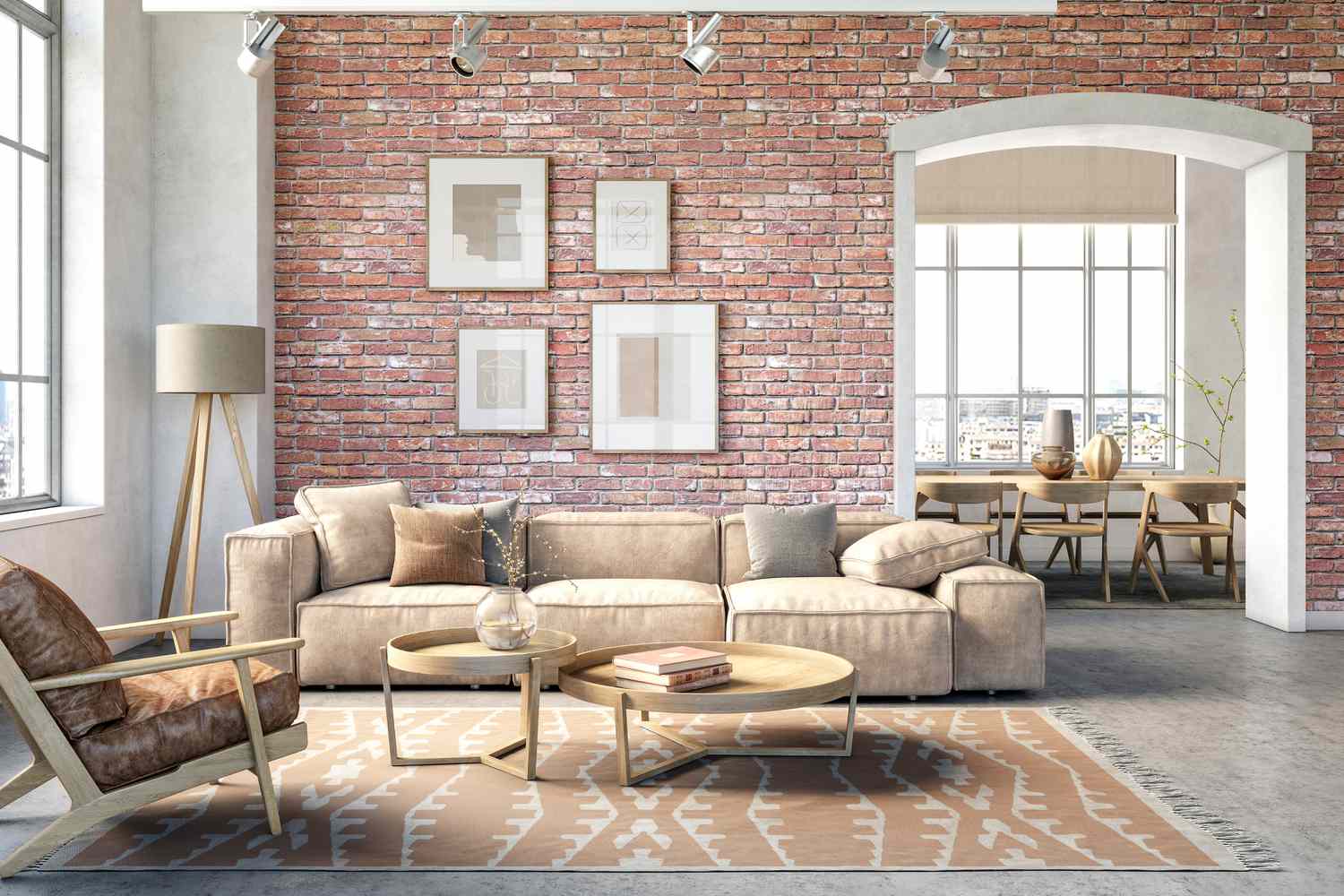
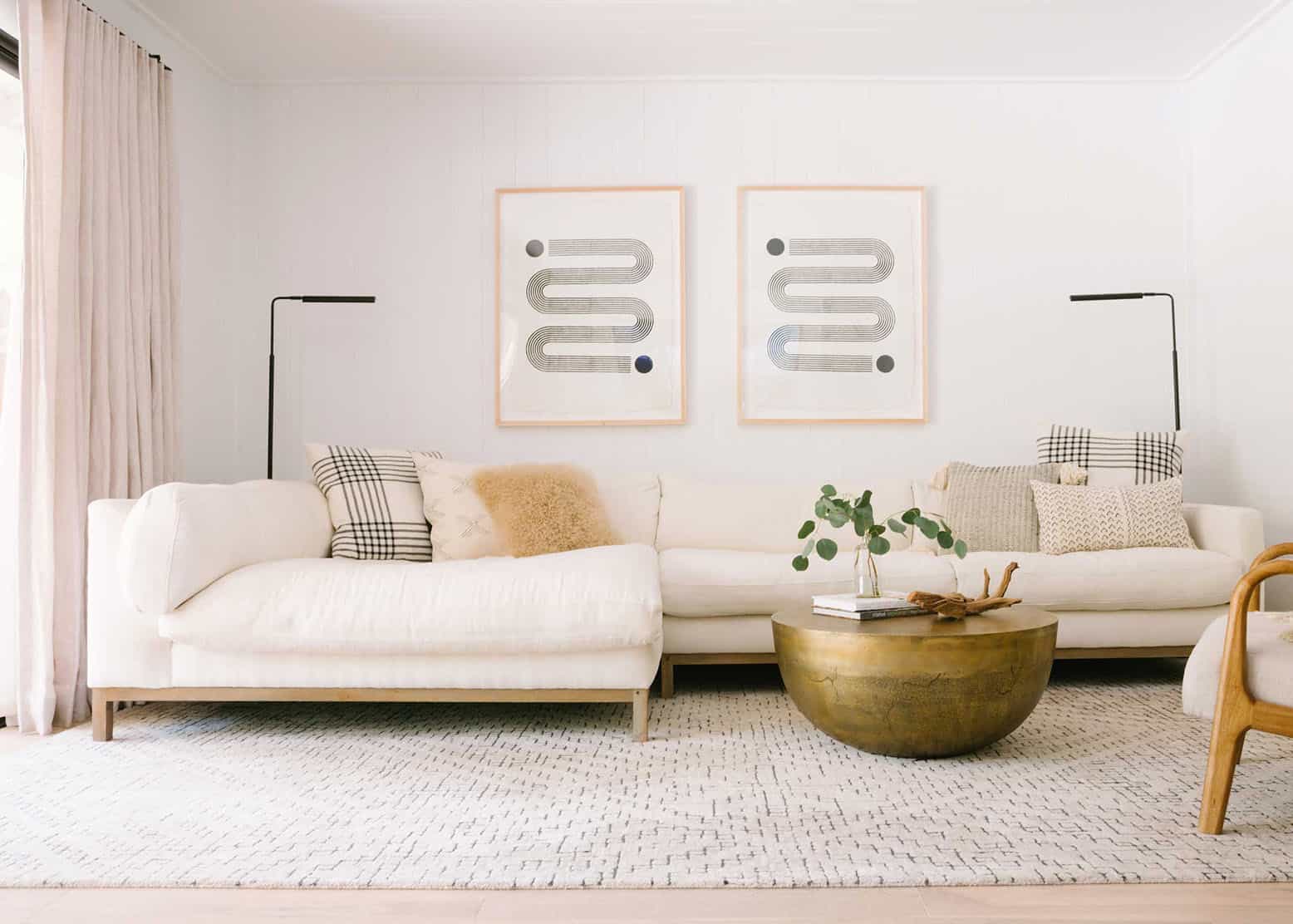
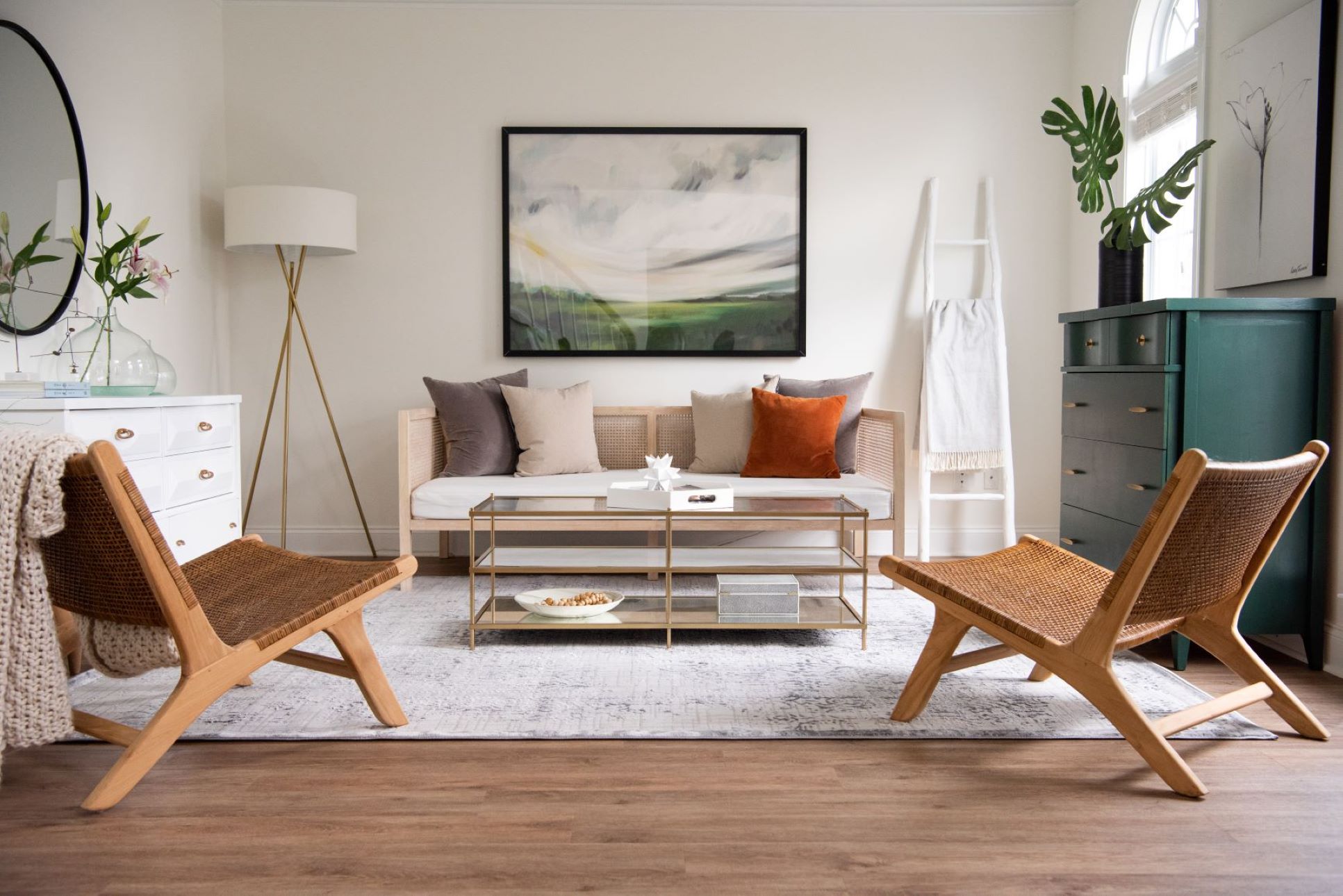
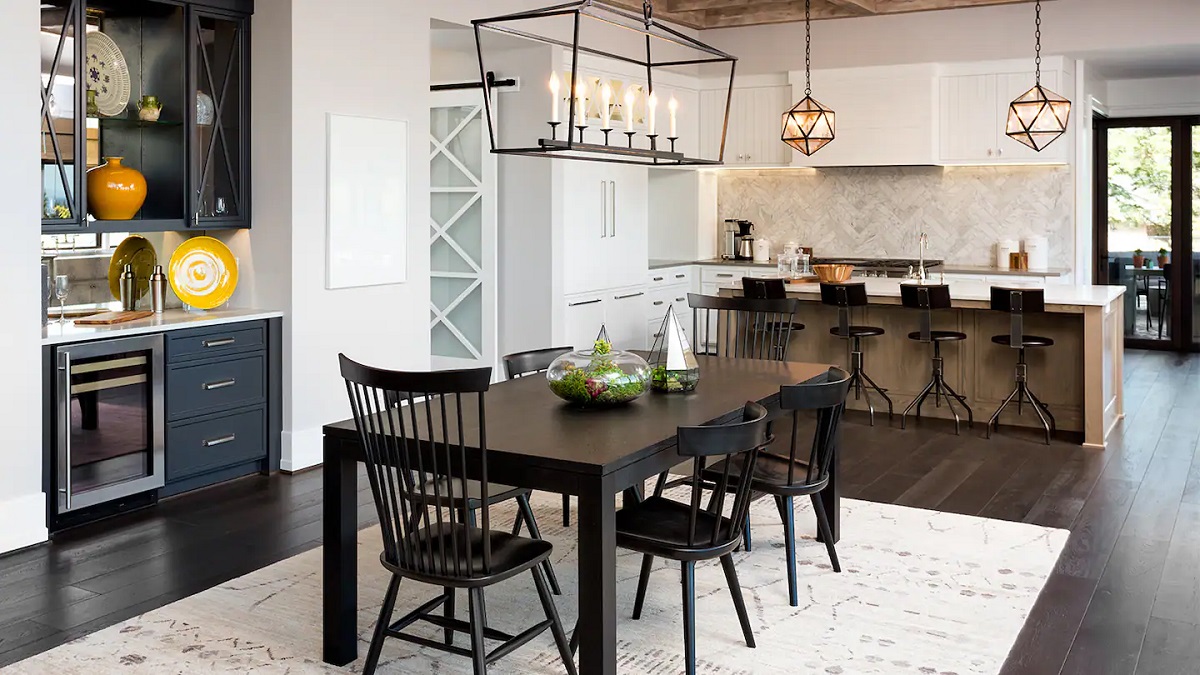
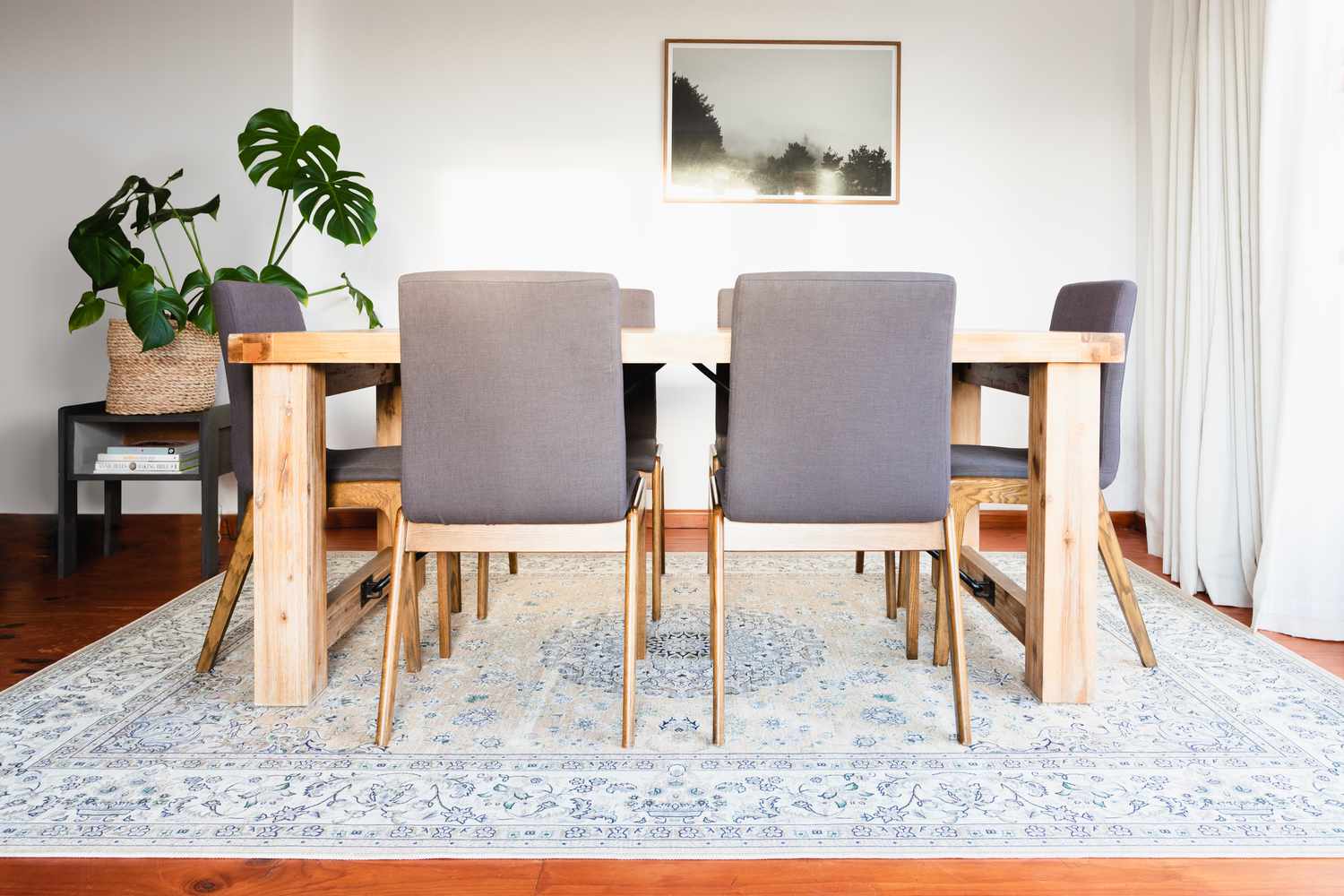
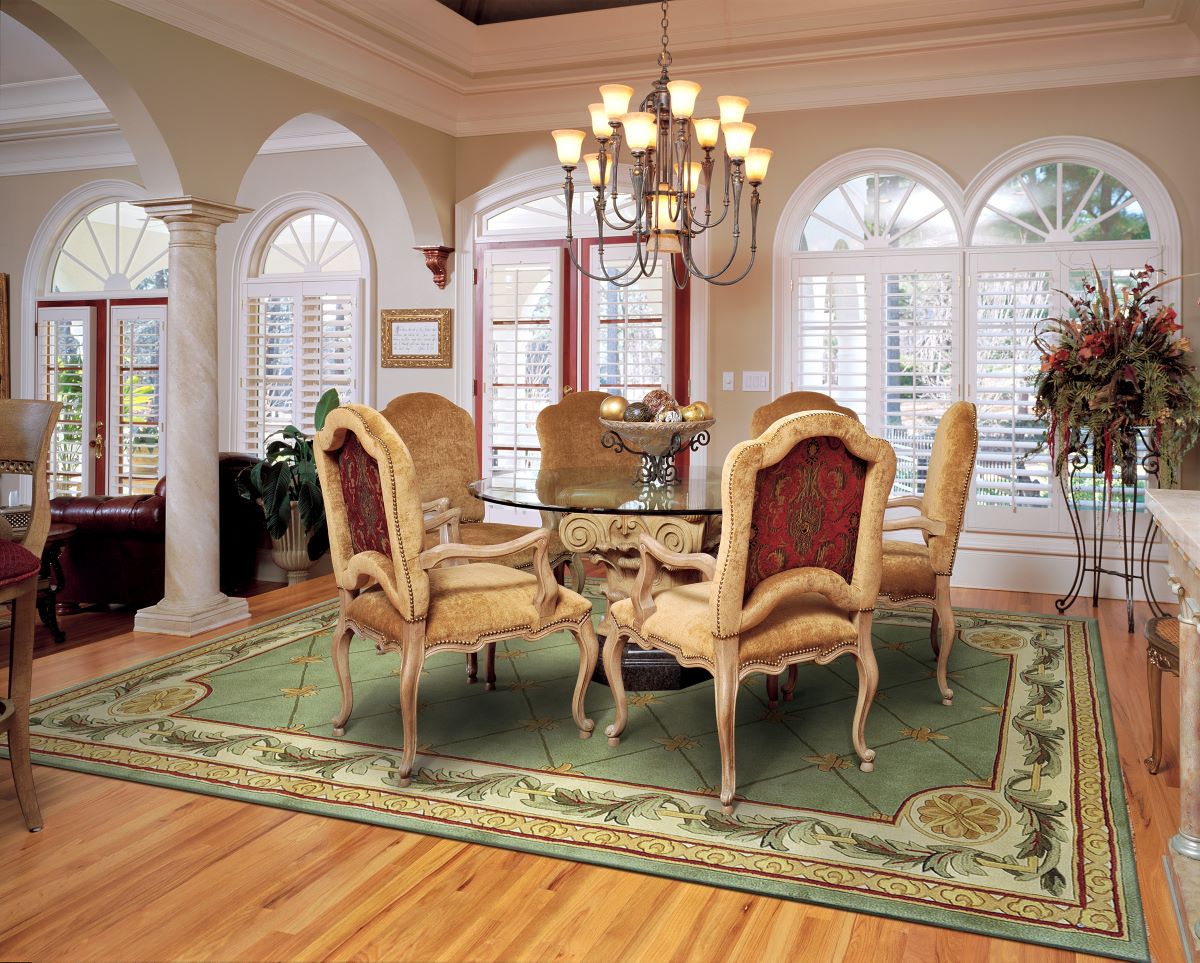
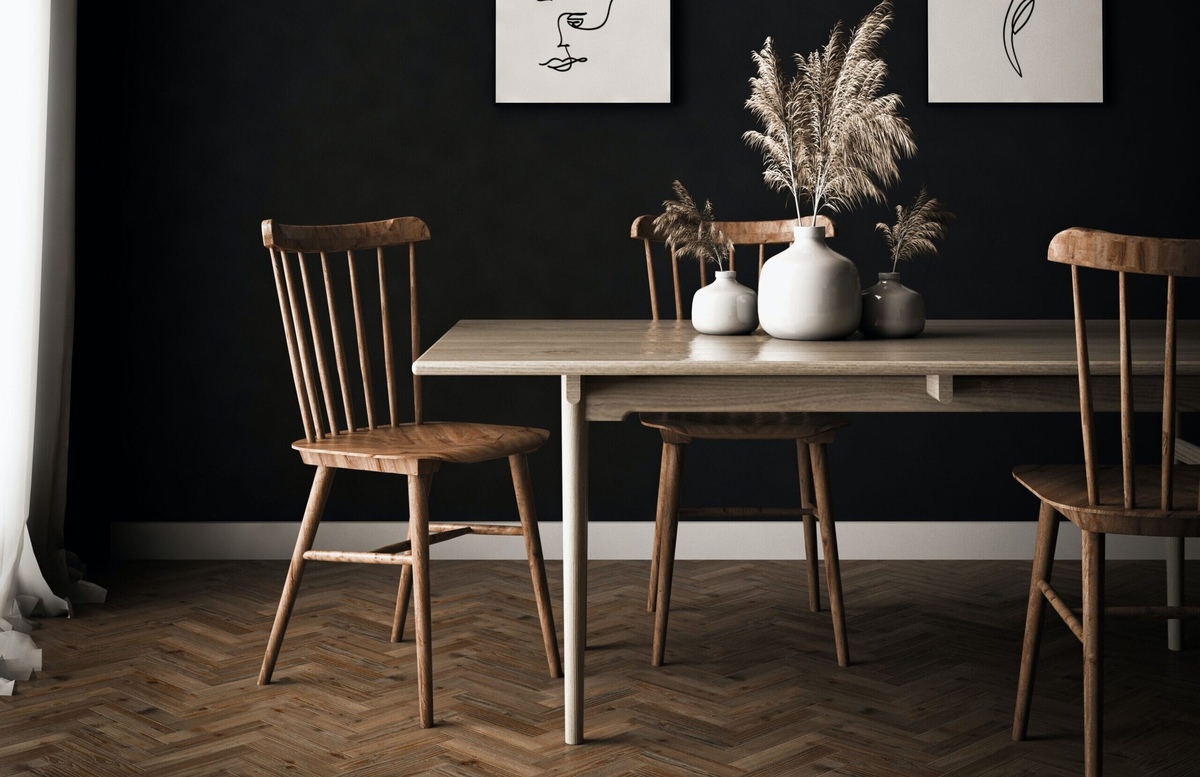
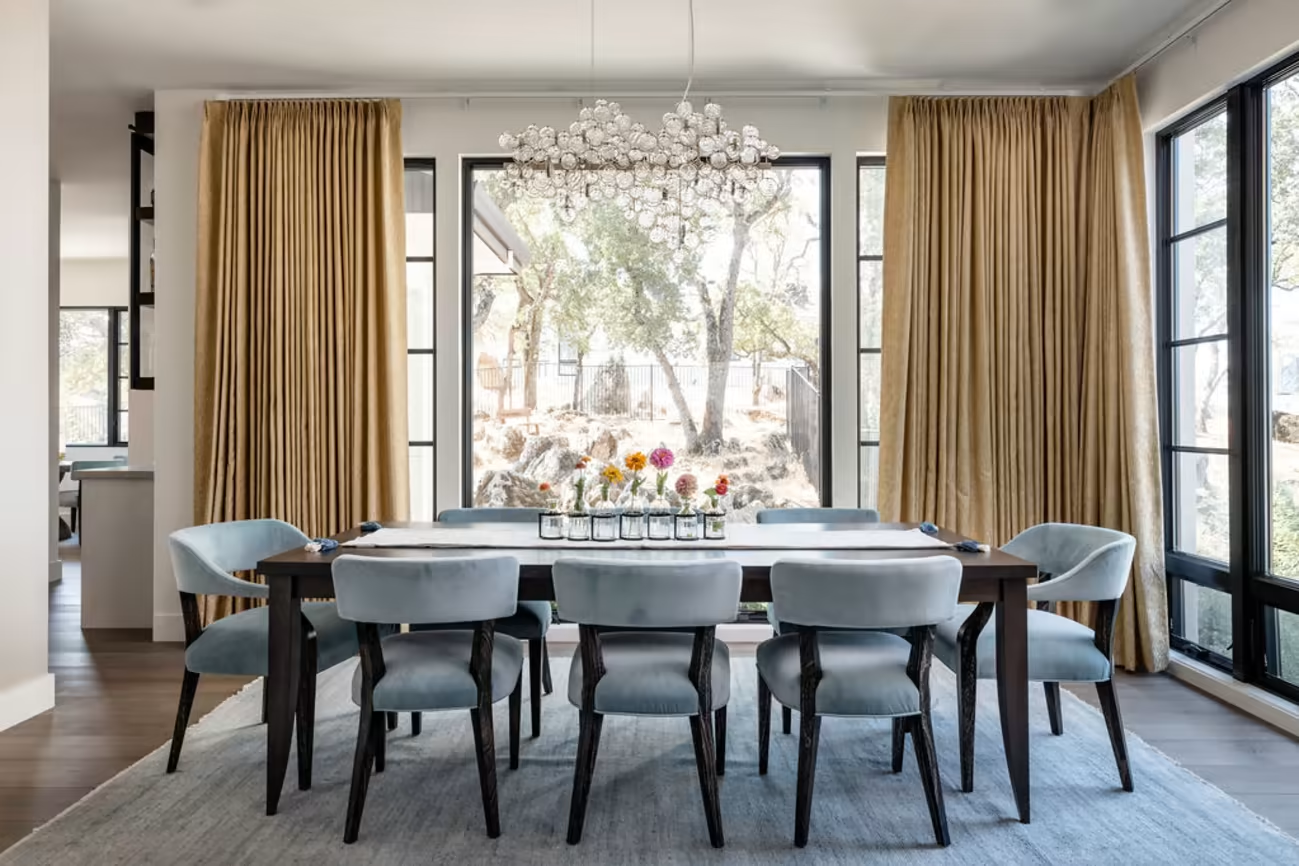
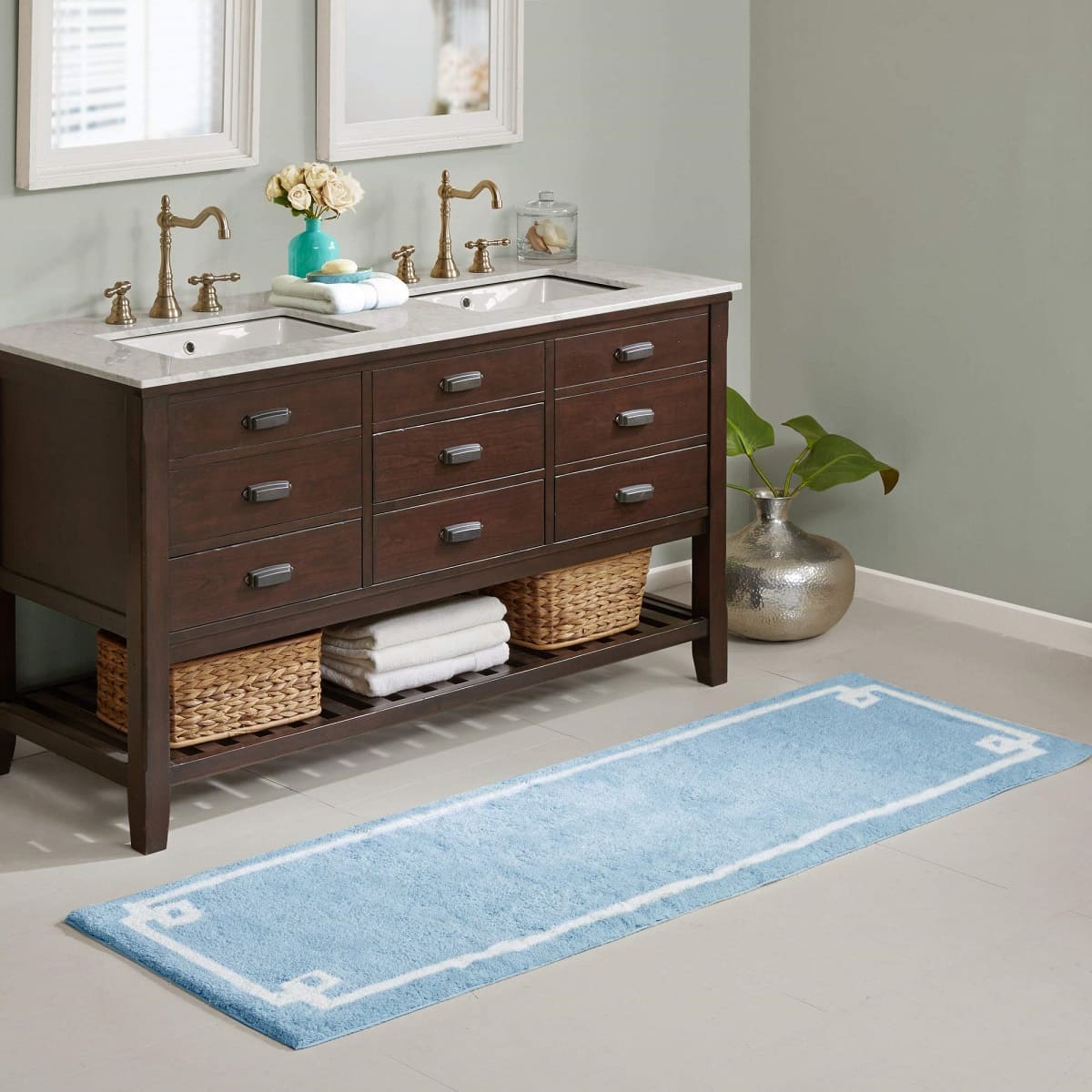


0 thoughts on “How To Choose A Dining Room Rug”